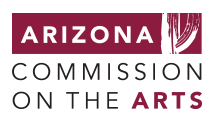The ASU-LACMA Master’s Fellowship in Art History offers a three-year degree program that pairs rigorous academic instruction through traditional masters-level coursework with on-the-job work experience. In this program, fellows explore key issues around expanding the canon of art history for the future of museums.
The fellowship allows staff already working at a participating museum to enroll in the master’s degree program in Art History at ASU. Museum employees take the classes via Zoom technology and participate in person and remotely in professional development activities.
Fellows have access to resources at the Los Angeles County Museum of Art, the Perez Art Museum Miami, the ASU Art Museum and ASU’s Herberger Institute, the largest comprehensive design and arts school in the United States.
Eligibility requirements
Potential applicants must be employed at a participating museum for a minimum of one year. In addition, applicants must fulfill all admissions requirements for the MA in Art History degree.
Program components
Coursework
ASU’s MA in art history is a comprehensive degree program designed to train students to engage with visuality in multiple ways. A diverse curriculum fosters critical understanding of aesthetics, production, patronage and consumption of art. Ten internationally recognized faculty members offer classes covering many cultures, time periods and geographies, using multiple approaches and methodologies. The program stresses intersections between disciplines and offers focused study in the areas of images and digital technologies, art in social and political contexts, and histories and theories of visual culture. Object-based learning using museum collections is an emphasis.
Fellows enroll in two graduate-level courses each semester. Course offerings in the curriculum include Ancient Greek and Roman, Asian, Contemporary, Global/Thematic Seminars, Latin American, Medieval, Modern and Pre-Columbian art. Future coursework is planned in American Indian, Latinx, African American, Korean, African Diaspora and Oceanica art.
Mentorship
An outside museum professional is assigned to mentor each fellow to provide individual counsel on graduate study, thesis and externship design, and ongoing career trajectory.
Thesis requirement
Under the guidance of a Thesis Committee, fellows write a thesis proposal during the second year and complete and defend their thesis in the third year. The thesis must demonstrate significant research abilities and methodological approaches.
Language requirement
Students must have a reading knowledge of one research language. The selected language needs to be appropriate for the area of research concentration and must be approved by the chosen faculty mentor. The requirement can be fulfilled by passing the Graduate Foreign Language Examination. Although it is highly recommended that students meet the foreign language requirement before beginning the program, many languages can be taken at ASU.
Membership
Fellows receive a free professional membership during the fellowship to the American Alliance of Museums or the Association of Art Museum Curators.
Travel and externship
Fellows are expected to participate virtually and/or travel to 1-2 convenings at either ASU or LACMA each semester and participate in annual convenings focused on current issues in museum practice and institutional leadership. Fellows participate in a customized weeklong externship at the end of their second year.
Details
Organization/Company: Arizona State University Website: https://art.asu.edu/degree-programs/art-history/lacma-partnership?dept=1400&id=1 Location: Tempe, AZ Deadline: Ongoing How to Apply: https://art.asu.edu/degree-programs/art-history/lacma-partnership?dept=1400&id=1


